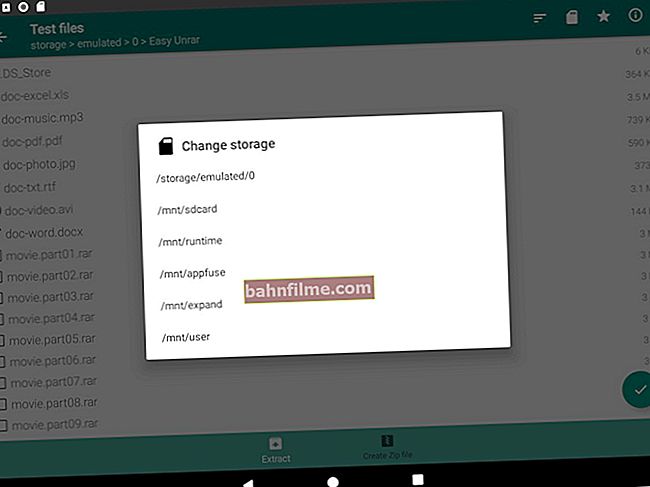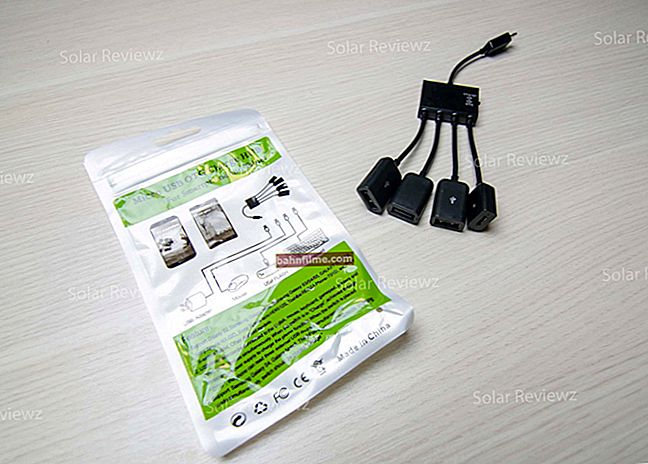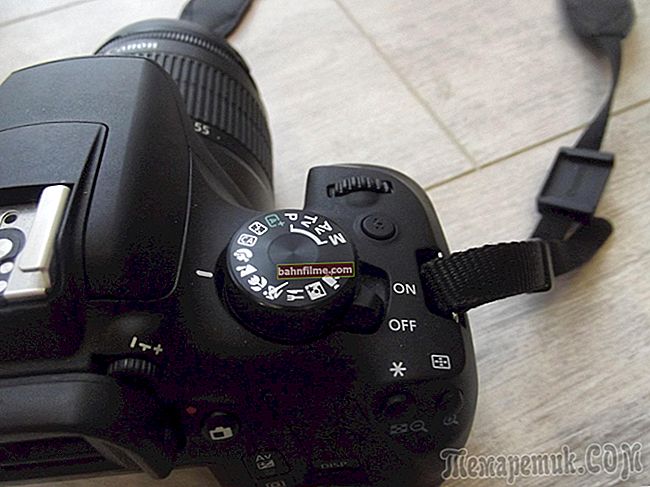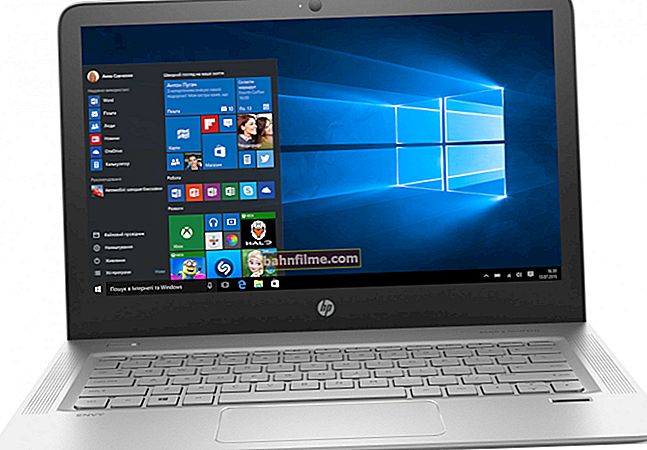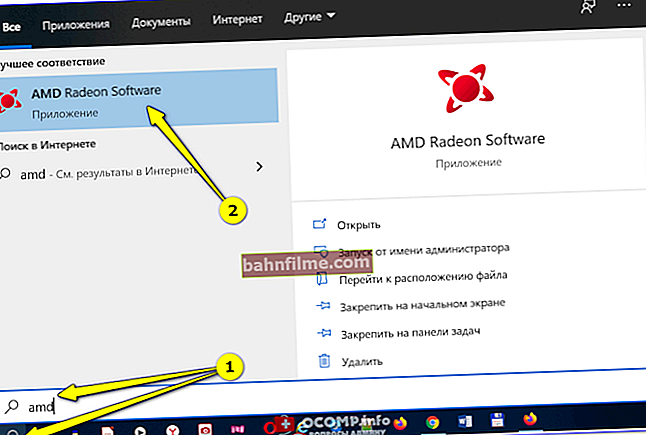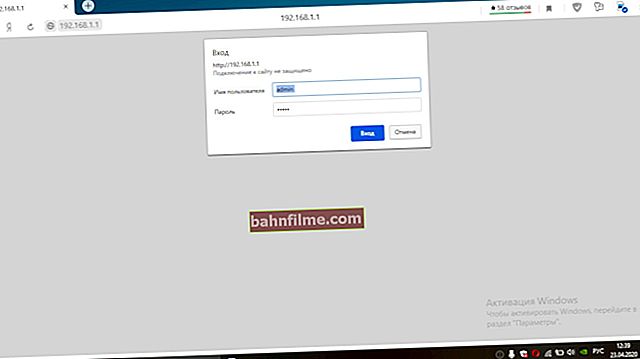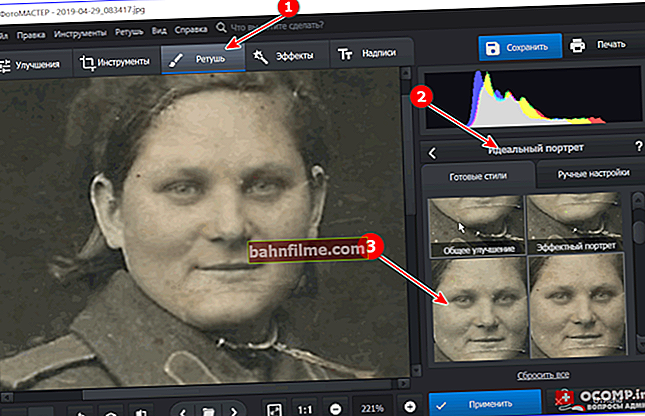 Good day!
Good day!
I think no one will argue that it is much more convenient to view (show) photos and videos not on a small smartphone screen, but on a large one, on a computer or laptop. 👌
And now, relatively recently, an interesting opportunity has appeared for this: in Windows 10 (version 1809+) there is a function that allows you to receive a broadcast from a smartphone (that is, what is displayed on your phone screen will be shown on a large computer screen! ).
Moreover, you do not need to install anything additionally, you do not need to change any super-complicated settings or parameters either.
In this article, I will present a short step-by-step guide on how to set up such a broadcast. I think it will be useful to many (for example, you can show everyone your photos when you come to visit).
And so, closer to the topic ...
*
👉 Note!
Transferring the phone screen to a computer via USB (or how to control Android from a computer) - see step-by-step instructions
*

An example of transferring an image to a laptop screen
*
How to transfer an image from the Android screen to a PC / laptop
👉 STEP 1 (optional)
First, make sure that on your phone and on your computer / laptop (which you will be connecting to each other) Wi-Fi adapter available... All modern laptops and smartphones have a built-in Wi-Fi module, and on a PC, of course, you need to buy it separately ...
In addition, make sure that 👉 the drivers for the Wi-Fi adapter are installed on the computer (if, when you click on the network icon, you see the ability to connect to wireless networks, then everything works as it should! 👇).

Checking that the Wi-Fi module is working
👉 Important (working conditions)
1) it is not necessary to connect the phone and PC to the same Wi-Fi network (they themselves will find each other without the help of a router). The main thing is that the Wi-Fi adapters are on and can work;
2) the computer must have Windows 10 version 1809+ (and not home!);
3) the smartphone must have an Android version of at least 5!
*
👉 STEP 2
Next, on a computer (laptop) you need to open parameters Windows 10 (this can be done through START (as in the screenshot below 👇), or you can just click on the combinationWin + i).

Parameters
Then go to the section "System / Projecting to this computer" - most likely, all the options will be grayed out and you cannot switch them yet ...
If so - click on the link "Additional components" .

Projecting to this computer is optional. Components
After, click on the button "Add component" , select "Wireless display" and press "Install" ... See example below. 👇

Install wireless display
Then configure the settings as shown in the example below:
- allow projection (for example, specify "Available everywhere" );
- put on mode "Every time you connect" (so that if someone wants to broadcast to your screen, you will be asked about it);
- I would recommend disabling the PIN code (when you enable it, in some cases, an error of inability to connect appears).
Then start the projecting application on this computer (see arrow-3 👇).

Launching the configuration application on this PC
A notification should appear on the computer screen that it is ready for wireless connection. Now you can leave it and go to the phone settings ... 👌

Ready for wireless connection
*
👉 STEP 3
I will note in advance that the Android version must be at least version 5 * (4.4).
Open the notification window on the phone (by pulling the topmost line with notifications towards you), and click on the function "Transfer Screen Image" .
Please note that there may be alternative names: "Broadcast" , "Smart View" (this is on Samsung phones) and other derivatives.

Smart View - phone - other device
Note!
If after clicking on this function you see a message that "No devices available" , follow this link "Additional settings" (see below for an example).

Transfer screen image

Choosing a wireless monitor
After that, a notification should pop up in the corner of the screen on your laptop / computer with the question: "Whether to allow projection here for such and such device ... " (example below). Click of course "Yes" ... 👌

Allow projection on PC
Next, a warning will appear (full screen) that the connection will be established soon (usually it takes no more than 10-15 seconds), and after that, the picture will finally appear!

An example of transferring an image to a laptop screen
Of course, now you can start viewing some photos, and they will be displayed on the computer screen in its entire width (if you start the game, you can also watch it, however, there will be slight freezes and lags *). A couple of examples in the photo above 👆.
** Broadcast features:
- the broadcast goes on with a slight delay (about 0.5-1 sec.!). I tried several different phones / laptops / PCs - the latency was always about the same (the same 0.5 seconds);
- due to latency, broadcast mode can only be used for viewing photos, videos, and presentations. For everything else, where speed and reaction are important (for example, games) - due to the delay, it is very uncomfortable to use (and sometimes it is impossible).
*
If the phone does not see the display, no image is transmitted: typical problems
1) I do not have an item "Send image" in my phone functions.
Please note that to be able to stream, you must have an Android version of at least 5 * (although this function is on one of my smartphones with Android 4.4 - but it does not connect to either a PC or a laptop)!
In addition, depending on the model and brand of your phone, the item may be called differently: "Broadcast" , "Smart View" and other derivatives.
2) In my Windows 10 there is no "Project to this computer" option.
Perhaps you have an "old" version of Windows 10 installed (find out its version, it must be at least 1809). In addition, you need a professional version of the OS (home will not work)!
3) In my version of Windows 10, in the "Project to this computer" tab, everything is gray and the settings do not change.
Perhaps you do not have a wireless display module installed (in the article above, I showed how to install it). Also, check the OS version again.
By the way, if you do not have the original version of Windows 10 installed, but an assembly from "folk" craftsmen, then anything is possible ...
4) The phone does not see the wireless display, does not find it at all ...
First, the devices should not be very far from each other (at least, at least during the first setup).
Secondly, check that the item is in the Windows settings "Available everywhere" (see STEP 2 above), and disable "PIN".
It will not be superfluous to use another phone for diagnostics (perhaps there is some kind of incompatibility. For example, I could not force a smartphone from Honor to transfer an image to a candy bar from HP).
5) Error in the Windows menu "This device does not support receiving a signal of the standard ..."
It is likely that you do not have a Wi-Fi adapter installed (or it does not work, for example, it is disabled).
More often, nevertheless, the problem is associated with the lack of a driver for the adapter.
Note: after reinstalling the driver or "manipulating" with enabling / disabling the adapter - restart the computer.
*
PS
If you still fail to set up your phone and computer to broadcast images from one screen to another, then you can simply copy photos and videos from Android's memory to your computer's hard drive. See the link below! 👇
*
👉 To help!
How to Upload Photos and Files from Your Phone to Your Computer - 6 Ways!
*
Add-ons are, as always, welcome ...
Good luck to all!
👋
First published: 12/11/2018
Correction of the note: 08/20/2020

